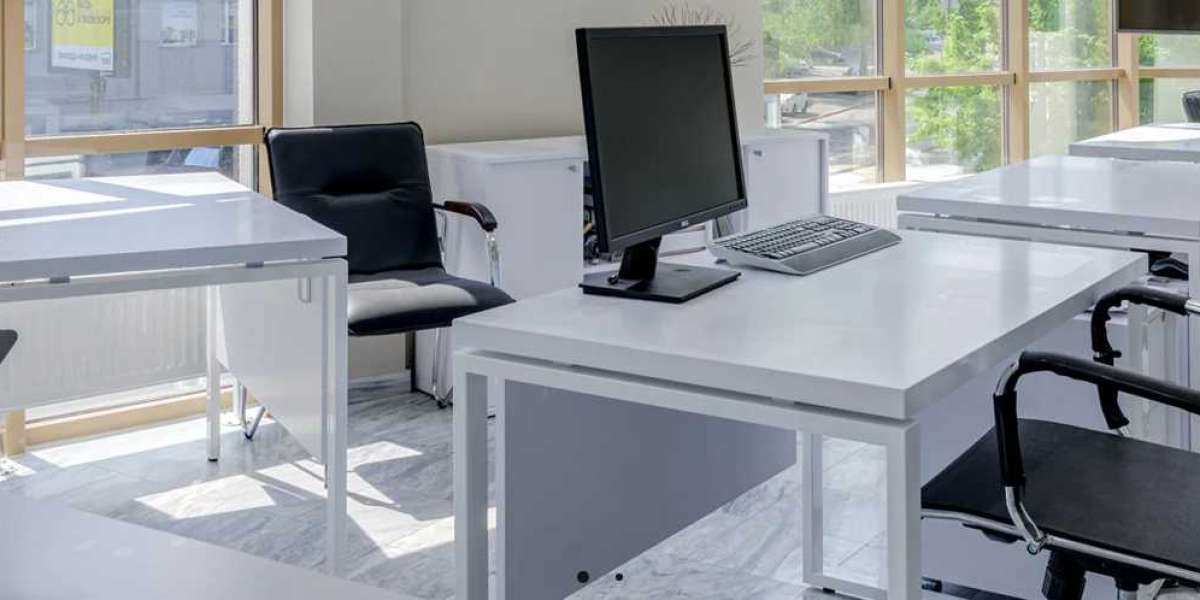The future of office design is driven by rapid technological advancements, changing work patterns, and an increasing focus on employee well-being. Cutting-edge furniture trends are at the forefront of this evolution, redefining how we think about and use our workspaces. Here are the most significant furniture trends shaping the future of office design.
1. Smart and Connected Furniture
The integration of technology into office furniture is a game-changer, creating workspaces that are both functional and adaptable.
- Features: Desks with built-in wireless charging, USB ports, and IoT-enabled features for adjusting lighting and temperature.
- Benefits: Enhances productivity by providing seamless connectivity and customization based on individual preferences.
2. Flexible and Modular Systems
Flexibility is key in modern office environments, where spaces need to adapt quickly to various tasks and team sizes.
- Features: Movable partitions, modular desks, and reconfigurable seating arrangements.
- Benefits: Allows for easy reconfiguration of workspaces to support collaboration, privacy, or specific project needs, promoting a dynamic and adaptable work environment.
3. Biophilic Design Elements
Bringing elements of nature into the office is more than just a trend; it’s a design philosophy that boosts well-being and productivity.
- Features: Natural materials, indoor plants, green walls, and large windows for natural light.
- Benefits: Creates a calming and inspiring environment, improving employee satisfaction and reducing stress levels.
4. Ergonomic Innovations
With a growing awareness of the health impacts of prolonged sitting and poor posture, ergonomic furniture is becoming increasingly sophisticated.
- Features: Adjustable height desks, ergonomic chairs with advanced lumbar support, and flexible monitor stands.
- Benefits: Reduces physical strain, prevents long-term health issues, and enhances comfort, leading to increased productivity.
5. Sustainable and Eco-Friendly Materials
Sustainability is no longer optional; it’s a critical component of modern office design.
- Features: Furniture made from recycled materials, low-VOC finishes, and sustainably sourced wood.
- Benefits: Reduces the environmental footprint of office spaces and appeals to eco-conscious employees and clients.
6. Acoustic Solutions
As open-plan offices remain popular, managing noise levels has become a significant challenge.
- Features: Acoustic panels, sound-absorbing furniture, and private pods for focused work or meetings.
- Benefits: Improves concentration and reduces stress by minimizing noise disruptions, creating a more comfortable work environment.
7. Collaborative Furniture
Collaboration is at the heart of innovation, and modern office furniture is designed to facilitate teamwork.
- Features: Modular seating arrangements, collaborative workbenches, and furniture with integrated whiteboards or screens.
- Benefits: Encourages spontaneous discussions, brainstorming sessions, and teamwork, fostering a culture of collaboration.
8. Home-Like Comfort
As the lines between home and office blur, creating a comfortable, home-like atmosphere in the workplace is becoming increasingly important.
- Features: Lounge areas with cozy seating, soft lighting, and casual meeting spaces.
- Benefits: Makes the office feel more inviting and comfortable, enhancing employee satisfaction and retention.
9. Space-Saving Solutions
With the rise of remote work, many companies are downsizing their office spaces, making efficient use of available space crucial.
- Features: Compact desks, multifunctional furniture, and wall-mounted solutions.
- Benefits: Maximizes the utility of small spaces without sacrificing functionality or style, making offices more versatile and adaptable.
10. Personalization Options
Employees value work environments that reflect their personal tastes and needs.
- Features: Customizable desks and storage solutions, personalized lighting, and decor options.
- Benefits: Increases employee engagement and satisfaction by allowing individuals to create a workspace that suits their preferences and work styles.
Conclusion
The future of office design is characterized by innovation, flexibility, and a strong focus on well-being. Cutting-edge furniture trends such as smart and connected furniture, modular systems, biophilic design elements, ergonomic innovations, and sustainable materials are reshaping workspaces to be more dynamic, comfortable, and efficient. By embracing these trends, businesses can create environments that not only enhance productivity but also improve the overall employee experience, making the office a place where people genuinely want to work.



